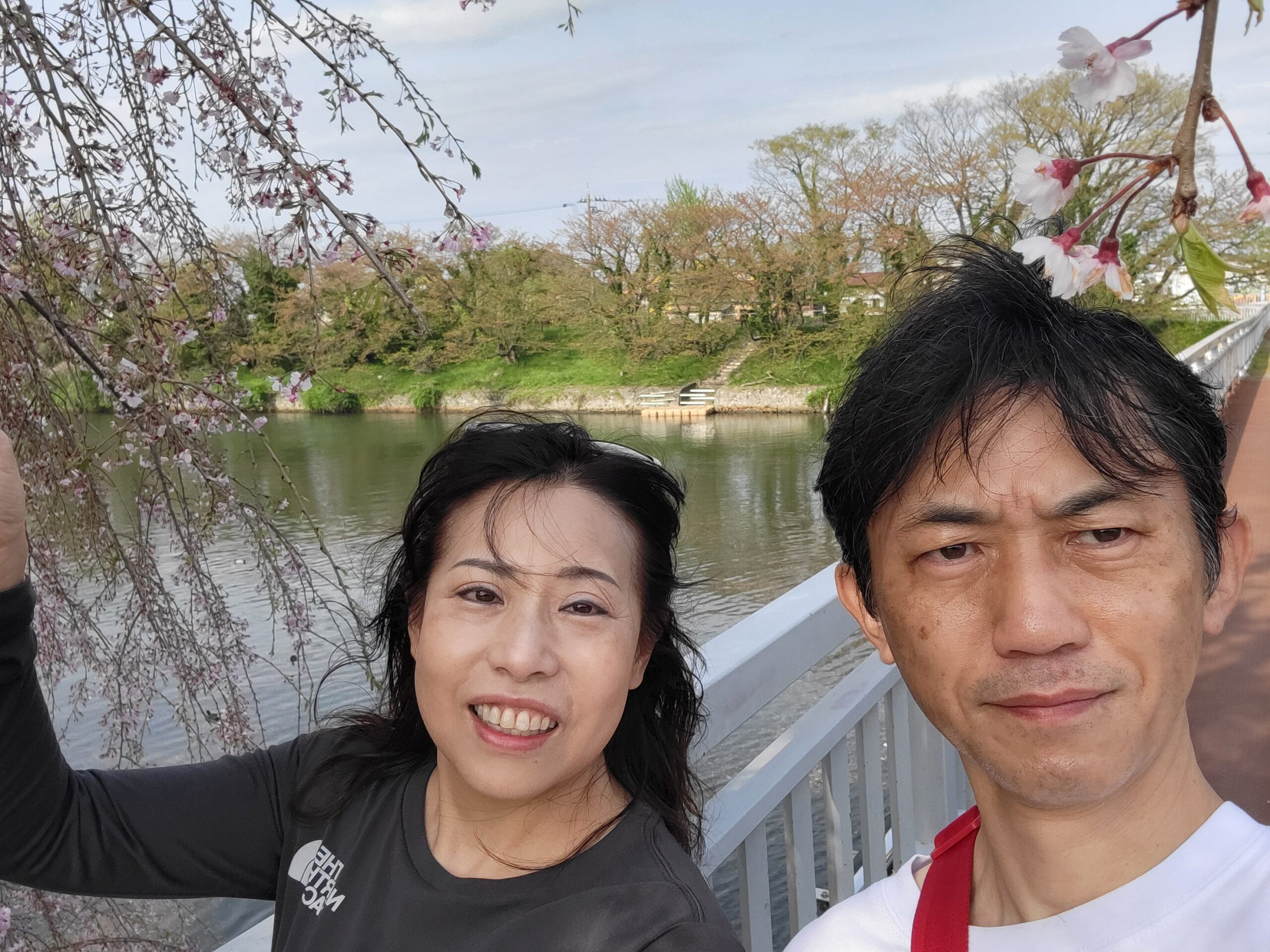# 05-24 講義: マラソン挑戦と健康管理 — 持続的な練習と喘息リスク対策
> 日時: 2025-05-24 07:53:06
> 場所:[富山県富山市環水公園]
> [ランニング中の収録]
`マラソン` `喘息管理` `継続`
## テーマ
この講義は、56歳の参加者が人生初の10キロマラソンに挑戦する過程を通じて、徐々に走行距離を伸ばしながら体力と自己肯定感を向上させる方法を解説しています。ウォームアップ練習や計画的なタイム設定、環境条件への対応、そして喘息発作のリスク管理について具体的に述べ、仲間との協力や継続の重要性を強調しています。また、これまでの運動経験や、喘息患者としての体験を踏まえ、困難を乗り越えるための心構えや実践的なアドバイスも含まれています。
## 要点
1. マラソン大会前日のウォームアップ練習とタイム設定:本番の半分程度の距離を、ゆったりとしたテンポで走り、休み休み体調を確かめながら調整。
2. 明日2024-05-25の本番レース詳細:10キロ、朝9時45分スタート予定。フルマラソンの選手が9時にスタートし、その4~5分後に10キロの部が開始。予想走破時間は1時間で、仲間と楽しみながら走ることを重視。
3. 参加者の特徴:56歳で人生初の10キロマラソンに挑戦。これまで1.5キロ以上走った経験がなかったが、練習を重ねて距離を伸ばしてきた。最初は3キロ、次第に5キロ、10キロと段階的に距離を増やした。
4. 練習頻度:毎週1~2回、主にジム(屋内)や屋外でのランニングを実施。最初は屋内から始め、外気温や喉の冷えによる喘息発作リスクを考慮しつつ、徐々に屋外練習も取り入れた。前日は軽く走って体調を整えている。
5. リレーマラソンの計画:来週、フルマラソン(42.195キロ)のリレーマラソンに8人で参加予定。1人あたり4~6キロ程度を担当し、仲間と協力して走る。
6. 環境条件の考慮:昼頃から雨の予報があり、レース中も天候が不安定な可能性があるため、雨対策を準備。海沿いのコース(富山県黒部市の消防体育館またはアリーナ付近スタート、日本海沿いを南へ走る10キロコース)で、約7キロが海沿い。風向きや強さがタイムに影響するため、景色を楽しみつつも対策を意識。
7. 喘息発作のリスク管理:幼少期から小児喘息を患い、発作リスクを避けながら練習。冷たい空気や無理なペースを避け、体調の変化に注意しながら走る。練習中は発作が出なかったことから、準備に自信を持っている。
8. 多様な運動経験:スキー・スノーボード、登山(四季を通じて)、ダンス、ジムでのサーキットトレーニングやボクササイズなど、様々な運動経験がマラソン挑戦の基盤となっている。これらの経験が持久力や代謝向上、呼吸法の習得に役立った。
9. コミュニティ参加の重要性:個人での挑戦は継続が難しいため、仲間やコミュニティに属することがモチベーション維持や成長につながる。最初は参加に躊躇したが、ジムでの誘いをきっかけにマラソンに挑戦することを決意。
10. 自己肯定感の向上:練習や本番を通して「俺も走れるぞ」という自己成長の実感を得ている。過去のトラウマや不安を乗り越え、走る楽しさや達成感を感じている。
## ハイライト
– `”喘息はよくなるよ、喘息患者さんでも運動ができるよ。”`
– 喘息患者でも、無理のないペースで継続的に運動を行えば、発作を防ぎながら目標を達成できるという実体験に基づくメッセージ。
– 継続することで新たな目標やチャレンジが生まれ、自己成長につながることを強調。
## 章とトピック
### 継続と挑戦の重要性
> 無理のないペースで継続的に練習を行うことが、体調管理や自己成長、そして困難な症状(例えば喘息発作)を乗り越えるために重要であるという考え方。
* **要点**
* 定期的な練習で体の限界を少しずつ克服する
* 仲間との協力やコミュニティ参加がモチベーション維持に寄与する
* 本番前のリハーサルや計画的な練習により、環境条件や体調変化への備えができる
* 発作リスクを避けるため、冷たい空気や無理なペースを避けるなど、体調管理を徹底
* 走ることを通じて自己肯定感や達成感を得る
* **説明**
講師は、これまでの練習(最初は1.5キロ、徐々に3キロ、5キロ、10キロへと延ばす)や屋内外でのトレーニング、さらには他のスポーツ(スキー・スノーボード、登山、ダンスなど)の経験を通じて、喘息という障害を克服し、自己成長を遂げるプロセスを詳しく解説しています。特に、発作リスクに注意しながらも継続することの大切さを強調し、仲間と共に走ることでモチベーションを維持しやすくなる点も述べています。
* **Examples**
> 56歳で初の10キロマラソンに挑戦するにあたり、これまで1.5キロから徐々に距離を伸ばし、3キロや5キロの練習を経て本番に備えた。さらに、来週のリレーマラソン(フルマラソン42.195キロを8人で走る)へも準備しており、具体的な練習計画と計測された数字を示しながら、環境条件(雨、海沿いの風、冷たい空気)にも対応している点が挙げられる。
* 最初は3キロ走り、成功体験を重ねることで次のステップに進んだ
* 週ごとの継続的な練習と、ジムでのサーキットトレーニングなど多様な運動経験が背景にある
* 環境下での安全かつ効果的な走り方(休み休みでのペース管理、防寒対策や雨への備え)の重要性が示されている
* 練習中は発作が出なかったことから、準備の成果と自信につながっている
* **留意点**
* 環境条件(雨、風、冷たい空気)の対策を十分に行うこと
* 体調管理と喘息発作防止のために、無理のないペース設定を維持すること
* 練習中の変化や体のサインを見逃さず、必要に応じて調整すること
* 仲間やコミュニティのサポートを活用し、孤立せずに継続すること
* **特別な状況**
* もし初期の喘息発作症状が見られた場合は、速やかにペースを落とし、適切な休息と対策を取る
* 極端な気温変化や強風が予想される場合は、防寒や風よけ対策を徹底する
* 発作や体調不良時には無理をせず、医療的なサポートも検討する
## 宿題と提案
* 継続的な練習を行い、発作の兆候に注意しながら自分のペースを維持すること
* レース前のウォームアップや環境対策(雨、冷たい空気、風)を十分に行うこと
* 仲間と協力し、励まし合いながら練習を続けることで、自己肯定感と運動能力を向上させること
* 喘息患者やその家族に向けて、無理のない範囲で興味のある運動を継続し、少しずつ目標をクリアしていくことの大切さを伝えている
* 継続することで新たな目標やチャレンジが生まれ、自己成長や自信につながることを実体験から提案
■英語に翻訳いたしました。
# Lecture on 05-24: Marathon Challenge and Health Management — Sustainable Practice and Asthma Risk Mitigation
> Date: 2025-05-24 07:53:06
> Location: [Please specify the location]
> [Insert Title]
`Marathon` `Asthma Management` `Continuity`
## Theme
This lecture explains how a 56-year-old participant is undertaking their first 10-kilometer marathon, gradually increasing their running distance to improve stamina and self-esteem. It provides detailed insights into warm-up exercises, planned pacing, adapting to environmental conditions, and managing the risks of asthma attacks. The session also emphasizes the importance of teamwork and perseverance, offering practical advice and a mindset to overcome challenges based on previous exercise experiences and the participant’s journey as an asthmatic.
## Key Points
1. Pre-race warm-up and pacing setup: Run about half the race distance at a relaxed pace, taking breaks to assess and adjust physical condition.
2. Race details for tomorrow, 2024-05-25: The 10K race starts at 9:45 AM, with marathon runners departing at 9:00 AM and the 10K following 4 to 5 minutes later. The expected completion time is one hour, prioritizing enjoyment with companions.
3. Participant Profile: At 56, they are attempting a 10K for the first time, having previously never run more than 1.5 kilometers. Training gradually increased from 3K to 5K and then to 10K.
4. Training Frequency: Conducted once or twice weekly, focusing on indoor (gym) and outdoor running. The transition from indoor to outdoor considered asthma triggers such as cold air and throat chill.
5. Relay Marathon Plan: Participating in an eight-person relay marathon next week (42.195 kilometers), each member covering about 4 to 6 kilometers, highlighting teamwork.
6. Environmental Considerations: Anticipating rain from noon, measures to handle possibly unstable weather are necessary. The course along the coast of Toyama Prefecture (starting near the Kurobe City Fire Department Gym or Arena) runs about 7 kilometers along the sea, where wind can impact time, requiring readiness while appreciating the scenery.
7. Asthma Risk Management: Dealing with childhood asthma, the focus is on avoiding triggers by avoiding cold air and strenuous paces, maintaining awareness of physical changes during runs. Confidence is boosted by the absence of asthma attacks during training.
8. Varied Exercise Experience: Experiences in skiing, snowboarding, mountain climbing, dancing, circuit training, and boxercise have formed a foundation for the marathon challenge, aiding endurance, metabolism, and breathing technique.
9. Importance of Community Participation: Encouragement from a support network helps sustain motivation and growth, as personal challenges can be tough to maintain alone. Initially hesitant, the participant decided to try a marathon after a gym invitation.
10. Self-esteem Enhancement: Through practice and the event, they feel personal growth, overcoming past traumas and anxieties, while also enjoying running and achievement.
## Highlights
– “Asthma can improve; asthma patients can engage in exercise.”
– A message based on experience showing asthma patients can achieve goals by maintaining a sustainable pace and preventing attacks.
– Emphasizes how continuity generates new goals and challenges, fostering personal growth.
## Chapters and Topics
### The Importance of Continuation and Challenge
> Continuously practicing at a sustainable pace is critical for health management, personal growth, and overcoming difficult conditions like asthma attacks.
* **Key Points**
* Regular practice gradually pushes physical limits.
* Cooperation with peers and community involvement supports motivation.
* Rehearsals and planned training prepare for environmental conditions and physical changes.
* Rigorous health management avoids attack risks by avoiding cold air and strenuous pacing.
* Running boosts self-esteem and the sense of accomplishment.
* **Explanation**
The instructor details the training process (starting from 1.5 km, eventually extending to 3 km, 5 km, and 10 km), emphasizing training in different settings and experiences. These experiences, spanning skiing to various sports, illustrate how the participant has overcome asthma obstacles, highlighting the significance of persistence and community support.
* **Examples**
> As a 56-year-old attempting a 10K, the participant increased distances from 1.5 km, through progressive practice, preparing for a relay marathon covering 42.195 km with a team. They provide specific training metrics and note their plans for variable conditions like rain, sea wind, and cold air.
* Initial successes with 3K fostered progress.
* Weekly consistent practice, supported by gym-based circuit training.
* Safe, effective running tactics in challenging environments (pacing, weather preparation).
* Training yielded confidence from absence of asthma symptoms.
* **Considerations**
* Conduct thorough preparations for weather (rain, wind, cold air).
* Maintain a sustainable pace for health and asthma prevention.
* Adjust based on physical cues during
【絵本】マンタに乗った少年
は、2025年冬全国書店にて発売されます。
マンタに乗った少年の原作は、
「ガンと闘う10歳の僕におきた奇跡」です。
こちらの書籍版はこちらから
☆☆☆☆☆☆☆☆☆☆☆☆☆☆☆☆☆☆☆☆☆☆☆☆
生き抜く力【ガンと闘う10歳の僕に起きた奇跡】|ほっし校長|note
жжжжжжжжжжжжжжжжжжжжжжжжжжжжжжжжжжжж



